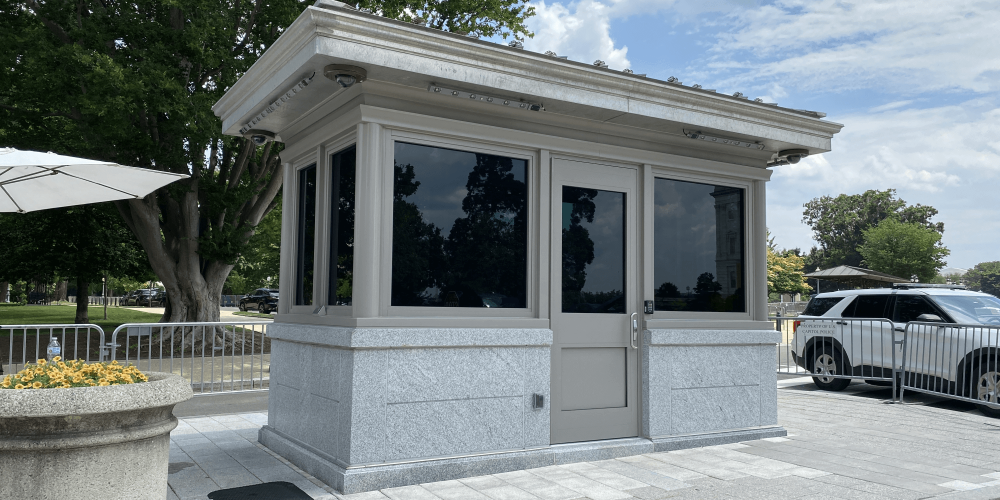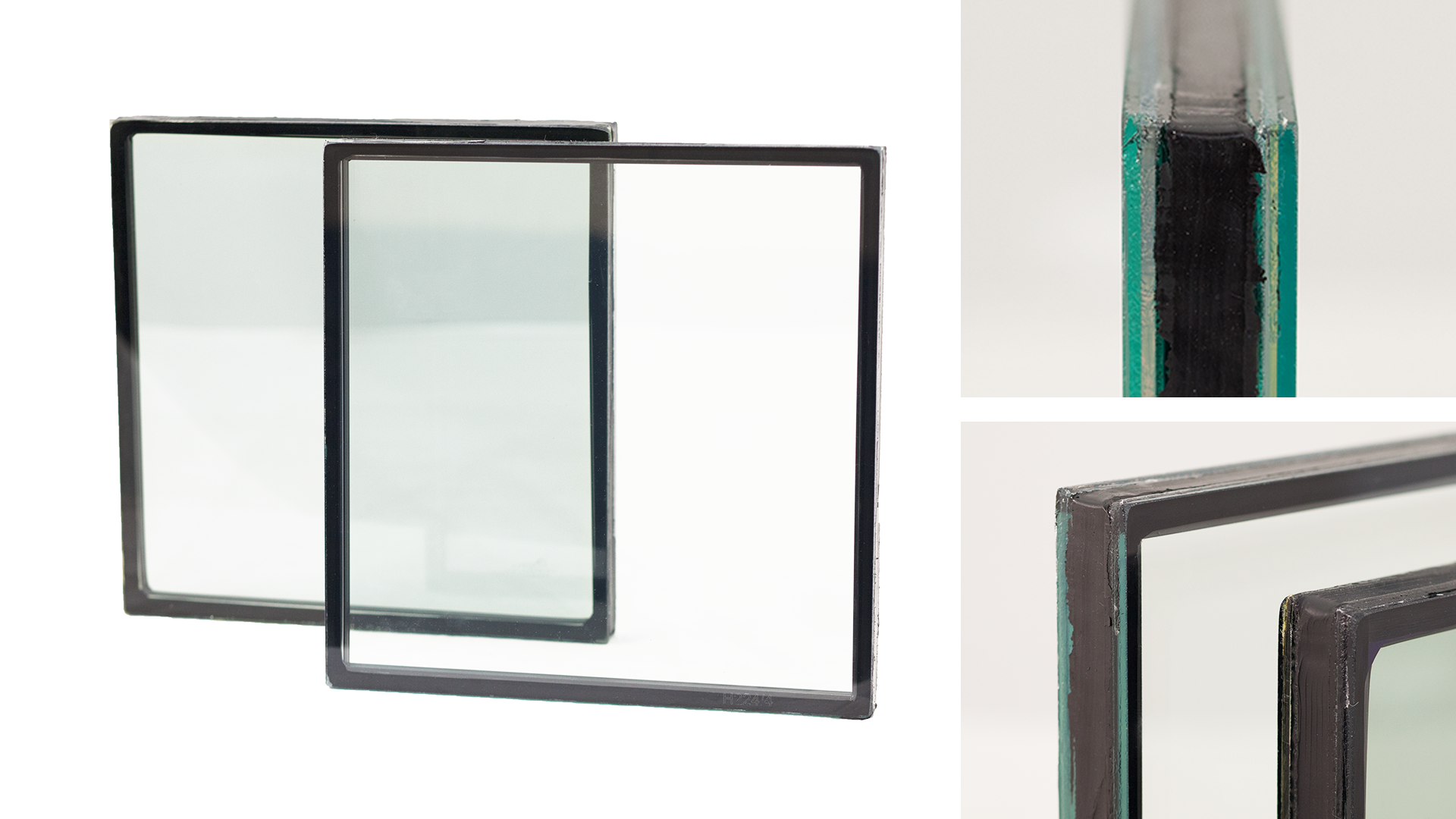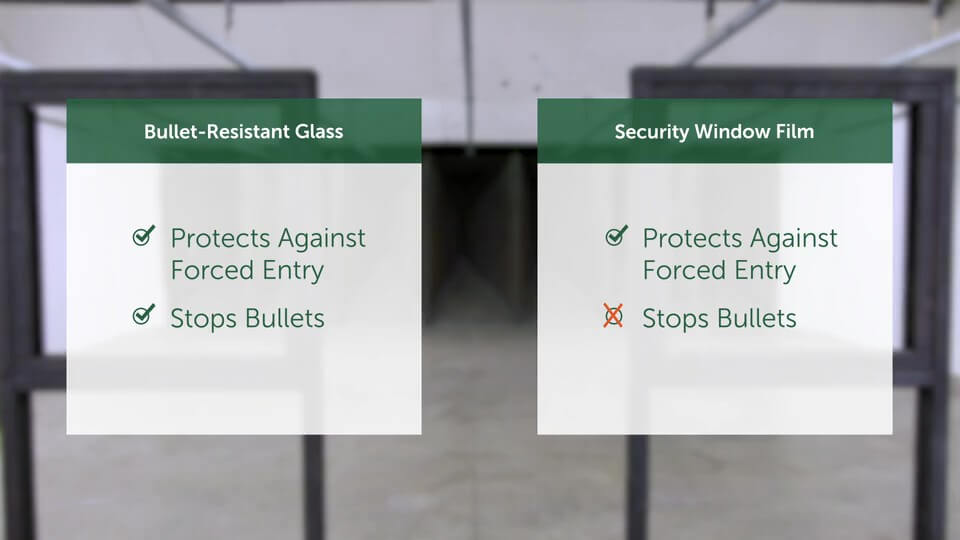Recent industry reporting has noted that the global market for bulletproof security glass is expected to double by 2025. That amounts to more than 14% growth each year—similar to the growth rate seen in hot industries like digital content. Ballistic security is growing at twice the rate of comparable industries like construction and manufacturing and more than three times that of the auto industry.
Industry reports like these often highlight materials and technological developments, implying that these, in part, are driving the sector's growth. For example, recent industry reporting on the bulletproof physical security sector has mentioned the University of Massachusetts’ federally funded research into a new type of transparent bullet-resistant material "made using a combination of liquid crystal elastomers and a type of polymer called polyethylene."
Total Security Solutions CEO Jim Richards, a 30+ year ballistic security veteran, thinks reports like these often suffer from a lack of context. TSS is generally hesitant to get excited about "gee-whiz" new materials and Jim personally doubts there is any materials game-changer on the horizon. But he agrees that the bulletproofing industry is continuing to grow and that this is driven by a handful of key physical security trends.
Drivers of Growth in Ballistic Security
Consider this celebrated new "transparent bulletproof liquid-crystal elastomer polymer."
"Research is constant and ongoing," Jim explains, "so we're always hearing about new materials that someone has published an academic paper on. But when it comes to bullet-resistant materials, practically speaking, little has changed in 40 years, apart from people having more access to these materials. The materials themselves are essentially the same."
For example, Jim recalls a great deal of enthusiasm for ceramic-based bullet-resistant panels about 10 years ago. These used a very different approach from the ballistic fiberglass used to reinforce walls or the ceramic body armor used in the military. They relied instead on a self-healing polyurethane “egg carton” structure filled with ceramic pellets to absorb shock and capture flying debris and projectiles. This gave these "game-changing" new bullet-resistant panels both ballistic stopping power and blast resistance.
"This wasn't just something theoretical in a lab," he recalls, "but an actual product. As I recall, they may have even deployed these in the field in Afghanistan and Iraq. It was supposed to be the next big thing."
So where is it today?
"Nowhere. New materials are great for a press release, but the simple fact is that it's hard to beat the materials we're currently working with, in terms of cost-benefit ratio. This growth we're seeing in the bulletproof industry, it isn't tech driven or materials driven. It's simply about access and demand. When I started 20 years ago, you maybe had a handful of areas where ballistic security was expected outside of government: banks, jewelry stores, 24-hour convenience and gas stations. Back then money had value and attacks were economically motivated. So that was a majority of the places that needed ballistic security, alongside a handful of high security areas—jails, for example, some government offices, and so on. Now it's accepted everywhere because the threat has changed. Today's reality is it's everywhere now."
Real Physical Security Trends: Higher Security, Higher Performance, Continued Confusion
Given his experience, Jim believes there are three physical security trends likely to continue into the foreseeable future:
- Higher Security
- Higher Performance
- Continued Confusion
TSS is uniquely situated and prepared to help guide organizations as they make security decisions amid this changing landscape.1.
1. Higher Security
"Every year that goes by, ballistic security is more accepted," Jim explains. "And we continue to see higher levels of protection required or asked for."
For example, late last year, TSS supplied a single community college with dozens of Level 8 aluminum doors. These are designed to withstand multiple shots from military-style rifles. When Jim started out, the only market for these doors was the federal government.
"Now it could be anywhere," Jim notes, "from a fire station to police stations to a library to a community college. That doesn't come cheap. Depending on the style of door, these can weigh 500 pounds and be four inches thick. So an organization doesn't make this kind of investment unless they feel there is a real threat they need to address."

Government guard booth with a level 8 door.
Jim feels an obligation to remind organizations that, despite what you see in the news, military-style assault rifles are very infrequently used in an attack, even today. While gun-related violence has climbed disconcertingly since we first addressed this issue in 2016, the portion of it that uses an assault rifle has stayed between 1% and 2%.
2. Higher Performance
Customers approaching TSS are increasingly adding forced entry or blast requirements to their specifications. In the past, forced-entry/blast resistance was treated separately from bullet resistance. This was likely because economically motivated crime fit a relatively narrow profile, one that never included an explosive device. Similarly, attackers motivated by something other than money fit into relatively narrow lanes: workplace attackers used handguns, domestic extremists threatened houses of worship with bombs, riots were an issue in some cities, etc.
Now these issues are more likely to overlap, as are the methods attackers choose.
But demand for ballistic materials with more robust performance against other attacks is a small element of a broader physical security trend favoring higher performance materials.
"If every school is going to have bullet-resistant exterior windows and frames, then you better be ready to deliver bullet-resistant windows and frames that perform like modern thermal windows. Otherwise you're going to first spend a good deal of money on making the security upgrade and then a fortune trying to keep that building comfortable."

TSS Defender Ballistic Insulated Glass
3. Continued Confusion
Ten years ago TSS started getting questions about using low-cost after-market security film to "bulletproof" existing windows. At that time, there was no film on the market that could make a non-rated window reliably stop any bullet.
Today, nothing has changed—except for the fact that "ballistic film" has become even more common.
"This sort of after-market security film has many uses," Jim explains. "When properly installed they can prevent vandals from getting into a building. They can prevent robbery. They can save lives in a natural disaster and reduce the threat posed by a blast or vehicle impact. In a situation with an armed active attacker, they can delay entry, and that's critical. But they do not stop a bullet. They hardly even slow a bullet down."
Marketing vs. Reality: How to Protect Yourself
Unfortunately, it seems that "ballistic" is headed the same way as "bulletproof": a marketing term simply meant to impart a confidence boost by implying a performance boost. "Bulletproof coffee" will pep you up, but it doesn't keep you safe during a stick-up. Tesla's "bulletproof" "Armor Glass" couldn't stop a thrown ball, let alone an actual bullet. "Ballistic film" does not impart "ballistic protection."

Moving forward, anyone interested in improving the physical security of their building will need to dig deeper and ask questions. If a product is advertised as "bulletproof" or "ballistic" and you actually need it to protect your safety, then the salesperson should be able to produce an independent report from a third-party lab showing that the material has passed a standard specifically for rating bullet-resisting equipment and materials, like UL-752.
TSS's ballistic security experts are always available if you have questions or want to get started with a specific project.

